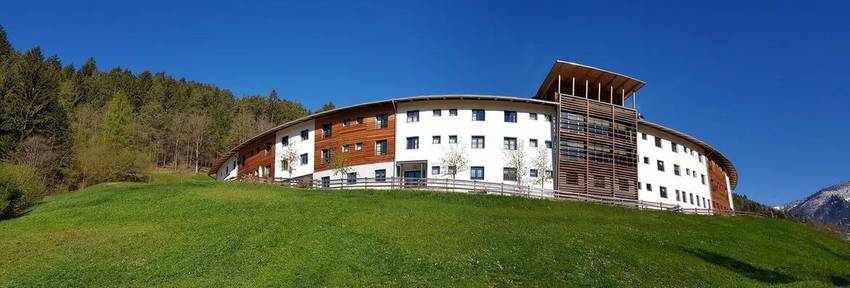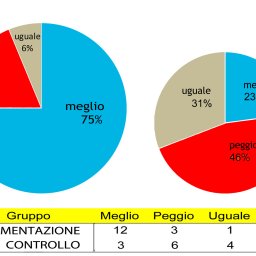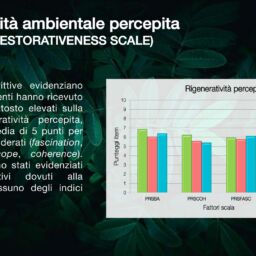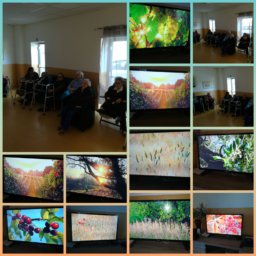RELAXATION CHANNEL Alamar Life: when TV becomes therapeutic.
Reports from the Giovanelli Care Home, Tesero (TN) Italy.



The Giovanelli Care Home, immersed in the enchanting scenery of the Dolomites, has chosen to use the Alamar Life RELAXATION CHANNEL as a non-pharmacological therapy to improve the quality of life of its residents, care staff, and family members.
The facility is equipped with closed-circuit television in the halls, rooms and dining rooms. With a single device, therapeutic TV is broadcast H24 in every department.
The Giovanelli Care Home was equipped with the Relaxation Channel in July 2019. The period to which this testimony refers is from August 2019 to March 2020, when due to the pandemic, the urgencies of the situation interrupted the evaluations.

OBSERVATION OF THE PREVIOUS SITUATION
At the time of observation there are 2 TV screens for communal viewing: one in the central living room and one located off-centre towards the dining rooms.
The type of programmes chosen often concerns family quarrels, disputes (Forum, Uomini e Donne for example), programmes in which the oral mode and verbal vehemence often prevail.
The handling of the remote control is often a source of contention and quarrel between residents and relatives alike.
Television – often misused – causes:
- HYPER-STIMULATION OF RESIDENTS resulting in increased behavioural disturbance.
- MAJOR ACCUMULATION OF STRESS by caregivers (confusion, conflict management).
- IDENTIFICATION OF THE TV OBJECT AS AN ELEMENT OF PREVARICATION by some residents/relatives.
- UNREGULATED SELF-MANAGEMENT.
- HARD SPACE MANAGEMENT (several residents demand preferential seating related to TV use).
- SOUND CONFUSION (in the living room one can hardly hear the residents’ voices, either because of the high volume or the type of broadcasts chosen).
- WATERING MOMENTS and LUNCHES ARE ALSO DIFFICULT due to agitated residents and distracted caregivers.
- Often sleepy residents experience rude awakenings due to excited images and sounds and this is a SOURCE OF STRESS AND AGITATION.

- The ENVIRONMENT becomes ENJOYABLE.
- At the level of perception, WELCOMING (previously repulsive).
- The ANTALGIC MANIFESTATIONS (headaches) of some residents, which they linked to the confusion of the environment, ARE GONE.
- Some residents note the DISAPPEARANCE OF THE SENSE OF MENTAL CONFUSION resulting from the overlapping of several sound elements.
- Some particularly sensitive residents report EMOTIONS OF ENCHANTEMENT AND BEAUTY.
- REDUCED BEHAVIOURAL DISTURBANCES AND HETEROAGGRESSIVENESS.
- IMPROVED SPACE MANAGEMENT.

ANALYSIS OF SOME CASES
We looked at multi-disciplinary diaries as of 1 August 2019, to examine a time span of at least 45 days prior to the start date of the E.N.CARE project, therapeutic TV. We considered a target group of residents who are exposed to therapeutic TV for at least 6 hours a day.
“I find the vision of these images very beautiful…. I like it very much, it is very relaxing.
I find it beautiful that when I look away and then look back at the television, there is another image, new and wonderful, a flower whose scent I seem to smell. And I am always amazed by that: it is always a surprise! Thank you so much for that.
I always look at it, because not only do I love plants and flowers, but because they have life and you feel like every kind of flower has its own story. I always admire it, because it is something that speaks to you. … I’m getting chills as I say it.”
Testimony of Mrs. A.

The case of Mrs. A.
A resident who arrived with the project already under way, spends her waking hours in the living room with the therapeutic TV.
Female, 92 years old, widowed, no children, educated, many interests.
Autonomous in her movements.
Suffering from cognitive impairment, psychophysical agitation, arrives at the care home after being discharged from the psychiatric unit, following coma due to incongruous intake of lorazepam for suicidal purposes.
Discharged with diagnosis of senile dementia with depressive aspects.
Delusions of larceny present.
On admission to the care home, she is very confused, disoriented in time and space, even though her manner is calm and cooperative.
The situation in the first week is this:
Sleepless and restless nights, therapies when required.
Strong state of agitation.
Delusional convinced she is in an agricultural research centre, fear of being killed, hetero-aggressiveness with another resident.
Room change necessary.

Over the next two months, Mrs. A. spends a lot of time in the living room, often entranced by the Alamar Life videos, and it is observed that:
- Manifesta tranquillità e apertura alla relazione (in entrata si segnalavano atteggiamenti di chiusura di tipo depressivo).
- Non ha più manifestato episodi deliranti.
- Non segnalati episodi di aggressività.
- La notte è maggiormente riposata (cambio stanza).
- Segnalato tono dell’umore buono.
- HA INIZIATO A LAVORARE A MAGLIA IN SALOTTO.
- Saltuariamente accetta di scendere in animazione.


The case of Mrs. R.
A lady, 80 years old, with moderate Alzheimer’s disease with BPSD, she does not sleep at night, is disoriented and devoted to walking.
The sleep problem becomes a crucial node of care (Mrs. R is unable to rest in bed).
Some caregivers have observed that while watching therapeutic TV, the lady relaxes and often falls asleep. We therefore try to make her sleep in the living room. The lady manages to sleep in this way.
To this day, during the nights when she begins to manifest psychomotor agitation, the caregivers bring her in front of the therapeutic TV, and most of the time this proves to be decisive.

In the care home, we then activated an additional E.N. CARE viewing point in a smaller living room where the television is placed at ‘eye level’. In this room, an activity called the Cuddle Group takes place, which consists of sensory stimulation, combining the use of images with sound, aromatherapy and therapeutic hand massage.
The case of Mrs. F.
We found that Mrs. R., who has senile dementia with significant vocalisations (often a source of discomfort for other residents as well), obtains two important benefits from watching therapeutic TV:
- Her gaze, which is usually turned downwards, is literally captured by the projected images and thus her posture improves considerably.
- As the viewing progresses, the vocalisations fade until they cease altogether (to everyone’s delight).

Initially, we encountered some resistance from caregivers and relatives, who saw therapeutic TV as paradoxically too relaxing and calming an instrument, as opposed to the continuous, albeit harmful, stimulation of traditional TV. With time and the results obtained, the resistance has been smoothed out.
The dementia social educators Serena and Cristina.

















